Research - (2023) Volume 11, Issue 3
The sole objective was to screen five plants for proximate constituents and mineral analysis. These plants include Perilla frutescence, Zanthoxylum armatum, Justicia adhatoda, Mallotus philippensis, and Sapindus mukorossi. The plants were collected from different districts i.e. Swat and Dir lower of Malakand division. The parts used in this experiment were the leaves of the mentioned plants. The leaves were shade-dried in the laboratory. The proximate study (in percentage) revealed that Perilla frutescens has the highest quantity of Ash 22.0% while Zanthoxylum armatum contains the least amount of Ash 7.50%. The highest amount of Moisture was found in Justicia adhatoda and Perilla frutescens 13.30% while moisture was lowest in Mallotus philliipensis 9.80%. The highest amount of protein 22.75% was found in Justicia adhatoda and the lowest was 11.38% found in Perilla frutescens. The Mallotus philliipensis contain the lowest fats of 1.70% while the highest fats are found in Zanthoxylum armatum at 5.20%. The highest fibers were found in Sapindus mukorossi 24.0% while fibers were lowest in Zanthoxylum armatum 12.0%. The sodium and potassium content was high in Sapindus mukorossi 0.4% and 1.8% respectively while sodium was lowest at 0.1% in Zanthoxylum armatum and potassium content was lowest at 0.8% in Perilla frutescens. The results showed that these plants have high nutritional composition. Because of this high nutritive value, they can be recommended for animals and humans as well.
Proximate analysis • Nutritional composition • Standard analytical method • Mineral analysis • Medicinal plants
Proximate analysis is a type of chemical analysis used to determine the nutritional value of food and feed materials. It involves the identification and quantification of the major components in a sample, such as moisture, ash, protein, fat, and carbohydrates. These components are called proximate because they provide a basic understanding of the composition of the sample, which can be used to predict its nutritional value. Proximate analysis is widely used in the food industry to evaluate the quality and safety of food products. It can help to determine the nutrient content of foods, identify potential contaminants, and assess the shelf life of products.
Proximate analysis can also be used to determine the nutritional value of animal feed and to ensure that animals are receiving a balanced diet. The Proximate analysis process involves a series of laboratory tests that are designed to isolate and quantify the major components in a sample. These tests may include measuring the amount of moisture in a sample, burning the sample to determine the ash content, extracting the fat and Protein content with solvents, and determining the amount of carbohydrates present.
Overall, proximate analysis provides important information about the nutritional composition of foods and feeds, which is essential for ensuring that people and animals receive the proper nutrients for good health.
Proximate analysis
This technique involves the separation and quantification of different components such as moisture, ash, crude protein, crude fat, and crude fiber. The information obtained from the proximate analysis can be used to evaluate the nutritional value of a food or feed, to determine its shelflife, and to assess its suitability for various industrial applications. For more than 160 years, the world uses this method to minimize certain healthcare problems by meeting nutritional and medicinal needs.
Moisture analysis is the first step in proximate analysis, as it determines the amount or percentage of water in the sample. “The moisture content of any food is a measure of its water activity and may be used to define its stability and susceptibility to microbial infection [1,2]. The high moisture content offers the greater activity of water-soluble enzymes and co-enzymes required for the metabolic activities of these green vegetables [3].
This is followed by ash analysis, which determines the amount of inorganic matter in the sample. The ash is the non-gaseous and nonvolatile residue that is left behind after the thorough incineration of any matter. The ash is home to minerals. The quantity of mineral content is directly proportional to the content of Ash present in the food materials [4]. Crude protein analysis determines the total protein content of the sample. Proteins are made up of amino acids. Due to the possibility that the rate of need for these amino acids may exceed the rate of synthesis in the body, arginine, proline, glycine, and glutamine are regarded as conditionally essential nutrients. Compared to beans (78%) and corn (86%), red meat is around 94% digestible.
The crude fat analysis measures the number of lipids in the sample. “Accumulation of fats can cause arteriosclerosis and aging” [5]. The primary function of Dietary fats is to increase the palatability of food by absorbing and retaining flavors. High fats consumption in the diet causes atherosclerosis, cancer, and aging” [6]. Fibers are the indigestible part of the diet, which is also called bulk or roughage. Fibers support good health and are known to lower cholesterol levels [7]. Heart disease, rectum and colon cancer, varicose veins, diabetes, phlebitis, appendicitis, obesity, and even constipation have all been linked to low-fiber diets [8,9].
Proximate analysis is widely used in food and feed industries, as well as in research laboratories. It provides a rapid and reliable method for assessing the nutritional value of different food and feed samples. It is also useful in the development of new products, as it can help to determine the suitability of different ingredients for specific applications. Minerals are critical building blocks of bones, teeth, tissues, muscles, blood, and nerve cells and are crucial for the total development of both mental and physical beings. Calcium provides animal bone with rigidity and support, and deficiency of calcium causes tetany [10]. Potassium aids in the control of electrolytes, water, acid-base balance, and muscular function in the body [11]. In addition, potassium interacts with macro ions to activate some enzymatic activities and interacts with proteins and nucleic acids. The regulation of plasma volume, acid-base balance, neuron function, and muscle contraction are all fundamentally influenced by sodium [12,13].
Collection and identification of materials
The chosen species of plants were collected from various locations in Pakistan's Makakand division and transported to the Botany University of Malakand's Taxonomy & Phytomedicine Lab Department. Dr. Gul Rahim was the one who identified them. Fresh and healthy plant materials were examined, and the diseased leaves were discarded. The materials were washed up, dried in open air under the shade. Exposure to direct sunlight was avoided because it damages bioactive compounds. The washing and drying of plant materials was done in the laboratory at room temperature for three weeks. After being fully dried, the plant samples were finely crushed using a laboratory grinding mill and kept in glass vessels for further use.
Proximate analysis
The proximate analysis of powdered samples was done using the Association of Analytical Chemists' varied analytical methods. The following are all the methods of proximate analysis.
Determination of Dry Matter: The plant sample was placed in a drying oven at a temperature of 105°C-110°C for several hours for 24 hours. This process will remove all the moisture from the sample. The sample was placed in a desiccator before weighing. The dried sample was weighed to obtain the dry weight. The percentage of dry matter was calculated by subtracting the amount of moisture in a sample from the total weight of the sample.
Dry Matter (%)= 100 - % of moisture
Determination of moisture content: The moisture content was easily determined by the drying method in the sample. 2 g of sample was taken (initial weight). The sample was placed in an oven at 105°C temperatures for 12 hours-24 hours and its weight was recorded after operation (final weight). The following formula was used to calculate the percentage of moisture:

Ash content: The dried plant powders were weighed 2 g (initial weight) in a dry and clean crucible. This crucible was placed in a muffle furnace. The sample was burnt in the Muffle furnace at 600°C for at least 4 hours, then cooled down in the muffle furnace to 200°C-300°C and transferred to the desiccator. The Ash in the crucible was weighed (final weight) and the Ash percentage was calculated by the given formula:

Crude fiber: The fibers content was evaluated by counting the number of dried lipid-free residues that lost their capacity to ignite after being digested for four hours with 200 mL of each 1.25 N H2SO4 and 1.25 N NaOH before being rinsed at 600°C. The following is how the crude percentage was calculated:

Determination of crude protein: The crude protein was determined by micro Kjeldahl technique, as described by Moses et al., (2012). In a heating tube,two grams of materials were dissolved in 10 mL of concentrated H2SO4. It was heated inside a fume cupboard with 1 Selenium tablet as a catalyst. The mixture was then shifted to a 100 mL flask and the volume was increased with distilled water. 10 mL of the mixture was mixed with an equivalent volume of 45% NaOH solution before being relocated to the Kjeldahl apparatus. The extract was combined with 4% H3BO3 and 3 droplets of methyl red as an indicator. A sample of 50 mL of distillate was obtained and titrated. The test was repeated three times, and the mean value was computed. The nitrogen content was calculated and multiplied by 6.25 to get crude protein content.

Determination of fat content: 2 g of each sample was wrapped loosely in filter paper and placed in the thimble, which was fixed to a round bottom flask that had been dried, cleaned, and weighed. The flask was filled with 120 mL of petroleum ether. The sample was boiled with a heating mantle and refluxed for 5 hours. The warming was turned off, and the thimbles with the expended samples were saved and later weighed. The weight difference was reported as a quantity of fat in a sample. The percentage of fats was computed as follows:

Determination of carbohydrate content: The percentages of carbohydrates were found out by the Nitrogen-free approach. The carbohydrate amount was calculated by subtracting the total sum of other proximate characteristics such as crude fat, crude protein, crude fiber, ash, and moisture from 100. The formula is as follows:
Carbohydrates (%) =100-(% ash+% Moisture+% Fats+%Fibres+%Protein)
Mineral analysis
The dried sample of our selected medicinal plant was subjected to evaluate Calcium (Ca), Sodium (Na), and Potassium (K) concentration. These mineral ion contents were determined in triplicate using the Association of Official Analytical Chemists' wet digestion technique (1990). One gram of powdered material was dissolved in ten milliliters of strong Nitric acid (HNO3) and ignited until the formation of scarlet Nitrous oxide (N2O) fumes ceased. After cooling, 10 mL of HClO4 (Perchloric acid) was added to it. This combination was cooked once again and reduced to a minor fraction. The processed filtrate was liquefied in distilled water to a volume of 50 ml. Mineral ion concentrations were measured in parts per million (ppm) using a flame photometer devised by Sherwood model 360 and converting it to a percentage using the following formulae:

Statistical analysis
All the determinants of the proximate and mineral analysis were found out in triplicate and the outcomes were taken as mean. The data were analysed by one-way ANOVA through statistix v. 10.1. The value of P was significant as p<0.05.
The results of proximate analysis of Perilla frutescens, Zanthoxylum armatum, Justicia adhatoda, Sapindus mukorossi, and Mallotus philippensis are shown in Table 1 and Figures 1-5. These plants' dried leaves have moisture contents of 13.30, 11.40, 13.30, 10.55, and 9.80%, which are comparable to the moisture contents of Carica papaya 10.40%, Jatropha curcas 11.09%, Acalypha manginata 10.82% and Atheris hispida 11.02% [14-17]. These values, however, are significantly lower than the moisture content of Manihot esculenta leaves, which is 51.6% and 70.5% in Ipomoea species leaves [18].
Table 1. The table displays the results of the proximate analysis of five medicinal leaves.
| S.No | Perilla frutescens | Zanthoxylum armatum | Justicia adhatoda | Sapindus mukorossi | Mallotus philippensis |
|---|---|---|---|---|---|
Dry Mass (%) |
86.70 ± 0.03 | 88.60 ± 0.05 | 86.70 ± 0.03 | 89.50 ± 0.05 | 90.20 ± 0.04 |
Total moisture (%) |
13.30 ± 0.04 | 11.40 ± 0.03 | 13.30 ± 0.04 | 10.55 ± 0.02 | 9.80 ± 0.05 |
Crude Protein (%) |
11.38 ± 0.06 | 14.00 ± 0.04 | 22.75 ± 0.04 | 17.50 ± 0.05 | 13.13 ± 0.03 |
Crude Fats (%) |
4.30 ± 0.07 | 5.20 ± 0.04 | 2.20 ± 0.06 | 2.50 ± 0.05 | 1.70 ± 0.06 |
Crude Fibers (%) |
14.50 ± 0.06 | 12.00 ± 0.06 | 16.50 ± 0.04 | 24.00 ± 0.05 | 20.50 ± 0.05 |
Total Ash (%) |
22.00 ± 0.05 | 7.50 ± 0.04 | 9.00 ± 0.05 | 10.00 ± 0.03 | 10.00 ± 0.03 |
Total Carbohydrates (%) |
34.52 ± 0.12 | 49.89 ± 0.19 | 36.25 ± 0.07 | 35.44 ± 0.09 | 44.87 ± 0.09 |
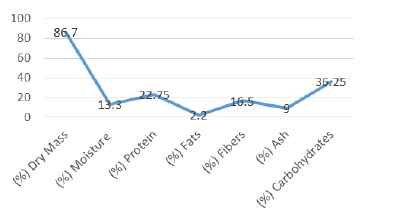
Figure 1: Proximate analysis of Justicia audhatoda.
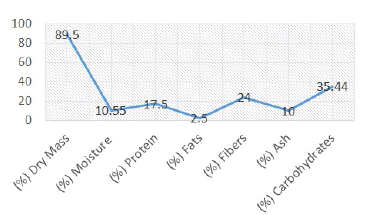
Figure 2: Proximate analysis of Sapindus mukorossi.
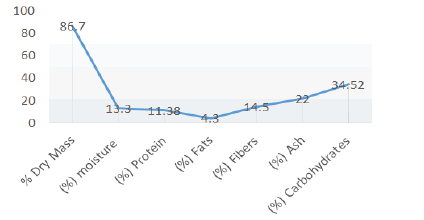
Figure 3: Proximate analysis of Perilla frutescens.
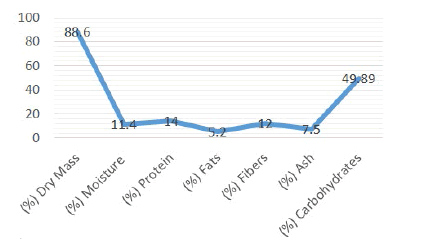
Figure 4: Proximate analysis of Zanthoxylum armatum
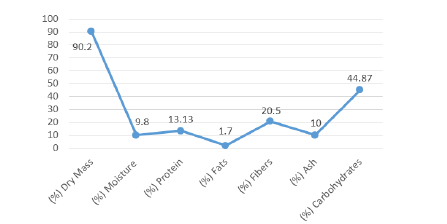
Figure 5: Proximate analysis of Mallotus philippensis.
n the result of protein content determination, the percent protein in the leaves of P. frutescens, Z. armatum, J. adhatoda, S. mukorossi, and M. philippensis were 11.38%, 14.00%, 22.75%, 17.50%, and 13.13% recpectively which is generally equivalent to Pistacia vera 19.12% and Ipomoea batatas 18.74% [17,19]. This value is higher than Rhazya stricta 9.67%, Phlomis bracteosa 10.61%, Telfaria occidentalis 7.00% and Lavandula angustifolia 6.13% and Valeriana officinalis 5.26% [20,21]. In any case, these quantities are lower than Piper guineensis (29.78) and Talinum triangulare (31.00) [22]. Like other green vegetables, the protein content of leaves is in between the normal scope of 8% to 30% by dry weight. Plants that have more than 12% of their calorific value from protein might be regarded an excellent source of protein [23]. This statement supported the use of leaves as food to humans and also to ruminant animals.
The total fibers in the leaves of P. frutiscense, Z. armatum, J. adhatoda, S. mukorossi, and M. philippensis have been found 14.50%, 12.00%, 16.50%, 24.00%, 20.50% respectively which are very high compared to Manihot esculenta leaves 7.87%, Gongronema latifolium 4.20%, Mentha sylvestris 6.47% and Punica granatum 4.44% [17,24,25]. The studied plant sample has a similar fiber content to that of Phlomis bracteosa 24.50%, Phlomis cashmeriana 23.96% and Ceratotheca sesamoides 25.75% [20,26]. However, our studied samples have low content of crude fibers compared to Piliostigma thionningii 35.03% and Alchornea cordifolia leaves 33.58% [27,28].
The crude fats in the leaves of P. frutiscense, Z. armatum, J. adhatoda, S. mukorossi, and M. philippensis were 4.30, 5.20, 2.20, 2.50, and 1.70 respectively. These values are nearly equal to the findings Spharanthus hiritis 3.68%, Talinum triangulare 5.09%, Amomum subulatum 2.07% but our reported values are higher than the leaves of Zizyphus vulgaris 0.41%, and Ipomoea batatas 0.74% [17,22,29]. However, these values are lower than Valeriana officinalis 14.35%. These are also lower than Coriandrum sativum 9.83%, Morinda lucida 10.20% and Parquetin nigrescen 11.30% [17].
The total ash content in the leaves of Perilla frutescens, Zanthoxylum armatum, Justicia adhatoda, Sapindus mukorossi, and Mallotus philippensis recorded were 22.00%, 7.50%, 9.00%, 10.00%, and 10.00%. These values are higher than Pistacia vera 3.26% and Zizyphus vulgaris 2.84% [17]. These values are relatively equal to the Ash values of Talinum traingulare 20.05%, Ocimum graticimum 8.00%, and Hibiscus esculentus 8.00%, Phlomis cashmeriana 17.66% and Dalbergia sissoo 12.33% [20,22]. The mineral contents present in the food materials is directly related to the quantity of ash content [4].
Carbohydrate is the major source of liveliness for all living beings and a basic ingredient for a healthy diet [30]. Our tested samples of P. frutiscense, Z. armatum, J. adhatoda, S. mukorossi, and M. philippensis leaves contain 34.52%, 49.89%, 36.25%, 35.44%, 44.87% carbohydrates. Manihot esculenta was reported to contain 68.83% carbohydrates, Dalbergia sissoo and Phlomis cashmeriana to contain 63.64% and 62.85% carbohydrates, respectively while the leaves of Ficus capensis to contain 73.77% carbohydrates [18,20,31]. But our values are greater than 13.6% found for Elaeagnus umbellata fruit and 21.49% reported for Pistacia vera [17,32]. Yet, the sample value we used is remarkably identical to the Acalypha marginata i.e. 38.24% [16].
The proximate analysis revealed important information about the macronutrient content of the medicinal plants. The findings showed significant variations in terms of moisture content, crude protein, crude fat, crude fiber, and ash content among the different plant species studied. These variations provide essential knowledge for the development of dietary and pharmaceutical applications
This information can guide future studies focused on harnessing the therapeutic potential of these plants and developing evidence-based treatments
Furthermore, it is necessary to explore the bioactive compounds and pharmacological activities of these medicinal plants. Additionally, investigating the potential synergistic effects among the identified components could enhance the development of effective herbal medicines. The results showed that these plants have high nutritional composition. Because of this high nutritive value, they can be recommended for animals (as fodder) and humans (as food) as well.
We would like to express our sincere gratitude to our supervisor Dr. Gul Rahim for his guidance, patience, and valuable insight throughout the entire process of study. We are also grateful to the Poultry Research Institute (PRI), Rawalpindi for providing us with the platform to carry out our research.
Citation: Ullah, S., et al. Proximate Analysis and Mineral Composition of Some Selected Medicinal Plants of Malakand Division, KP, Pakistan. Nat Prod Chem Res. 2023 11(4), 8-12.
Received: 06-Mar-2023, Manuscript No. npcr-23-25488; Editor assigned: 08-Mar-2023, Pre QC No. npcr-23-25488(PQ); Reviewed: 20-Mar-2023, QC No. npcr-23-25488(Q); Revised: 23-Mar-2023, Manuscript No. npcr-23-25488(R); Published: 30-Mar-2023, DOI: 10.35248/2329-6836.23.11.3.8-12
Copyright: ©2023 Ullah S. This is an open-access article distributed under the terms of the Creative Commons Attribution License, which permits unrestricted use, distribution, and reproduction in any medium, provided the original author and source are credited.